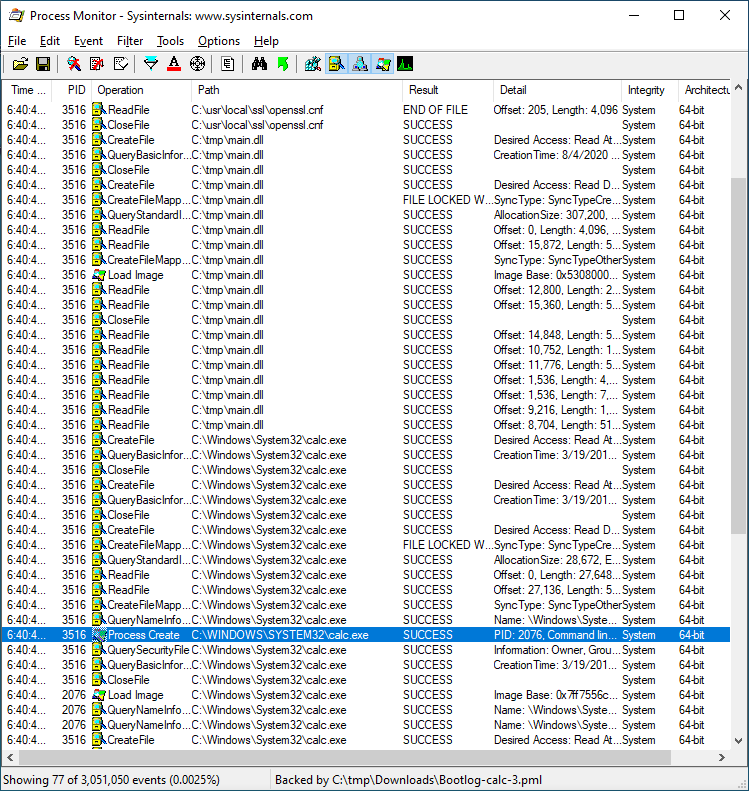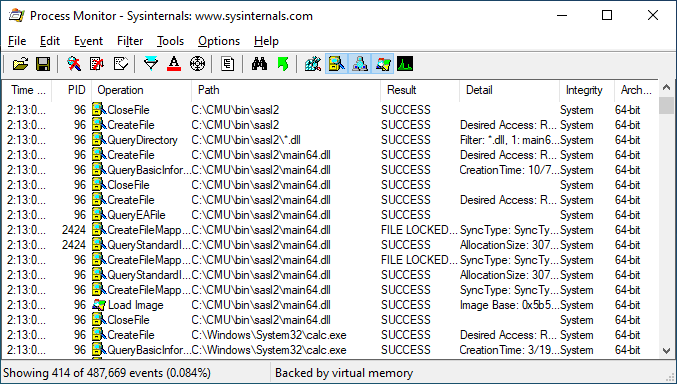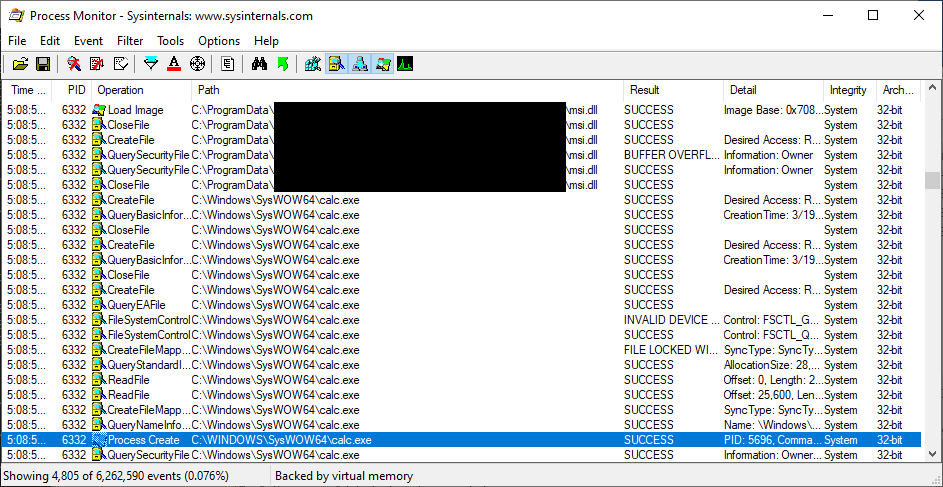...
Back when we first released CERT BFF, the usual process for putting together a proof-of-concept exploit for a memory corruption vulnerability was:
- Fuzz the target until you get control of the instruction pointer.
- Find out which bytes can be used to store your shellcode, using BFF string minimization.
- Use ROP as necessary to modify the program flow so that it executes your shellcode.
It was often relatively straightforward to go from Start to PoC with CERT BFF. As time went on, the bar for exploiting memory corruption vulnerabilities was raised. This can likely be attributed to two things that happened over the years:
...
In this post I will share some of my findings as well as the filter itself for finding privilege escalation vulnerabilities with Sysinternals Process Monitor (Procmon).
The Concept
When a program is installed on the Windows platform, some components of it may run with privileges, regardless of which user is currently logged on to the system. These privileged components generally take two forms:
...
Checks 1 and 2 can be trivially implemented in Process Monitor. Check 3 is a little more complicated and may result in some false positives if we limit our tool to strictly what can be done with a Process Monitor Filter. But I've created a filter that seems to do a pretty good job of making privilege escalation vulnerabilities pretty obvious.
...
As we noticed in the screenshot above, the VMware Tools process VGAuthService.exe attempts to access the path C:\Program%20Files\VMware\VMware%20Tools\VMware%20VGAuth\schemas\xmldsig-core-schema.xsd. How might this happen? If a path containing spaces is HTML encoded, those spaces will be replaced with %20.
...
Putting all of the pieces together here, we have a privileged process that attempts to load a file that does not exist because the path is HTML encoded. Since an unprivileged user can create this path, this now turns into a case where an unprivileged user can influence a privileged process. In this particular case, the consequences are only an XML External Entity (XXE) vulnerability. But we're also just getting warmed up.
...
Using a publicly-known technique for achieving code execution via openssl.cnf, we can now demonstrate code execution via running calc.exe with SYSTEM privileges from a limited user account:
...
And sure enough, if we look at the code for libsasl, we can see a hard-coded reference to the path C:\CMU\bin\sasl2.
As an unprivileged user, we can create the directory and place whatever code we want there. Once again, we have calc.exe executing with SYSTEM privileges. All from an unprivileged user account.
...
Looking further into the Qt development platform, this type of vulnerability is a known issue. The vulnerability was patched more than 5 years ago, but it never received a CVE. Software may be vulnerable to privilege escalation if it was built with a Qt version from before this patch was introduced or the developer did not use windeployqt to patch out the qt_prfxpath value stored in Qt5core.dll.
...
Using the C:\ProgramData\ directory without explicitly settings ACLs
The ProgramData directory by design can be written to without elevated permissions. As such, any subdirectory that has been created in the ProgramData directory will by default be writable by unprivileged users. Depending on how an application uses its ProgramData subdirectory, a privilege escalation may be possible if the ACLs for the subdirectory are not explicitly set.
...
This is a straightforward potential case of DLL hijacking, which is made possible due to lax ACLs on the directory from which the software runs. Let's plant a crafted msi.dll there and see what we can accomplish:
...
You can test your own platforms for privilege escalation vulnerabilities using the Process Monitor filter and techniques described above. For any file locations that are determined to be insecure, you can manually lock down those directories so that unprivileged users cannot modify those locations. For any vulnerabilities that you discover, we recommend contacting the affected vendors to notify them of the vulnerabilities so that they can be fixed for everyone. In cases where the vendor communications are unproductive, the CERT/CC may be able to provide assistance.


